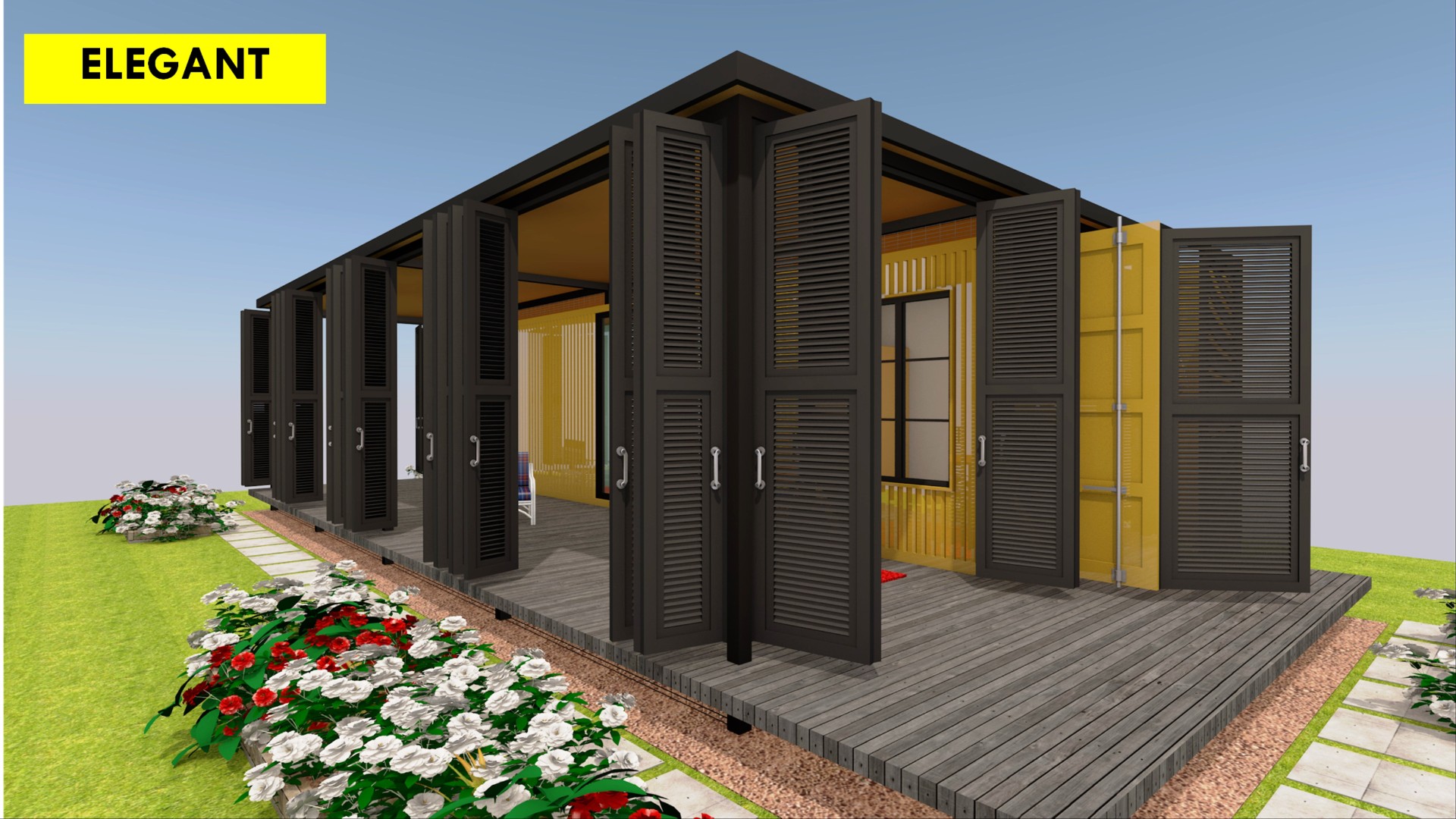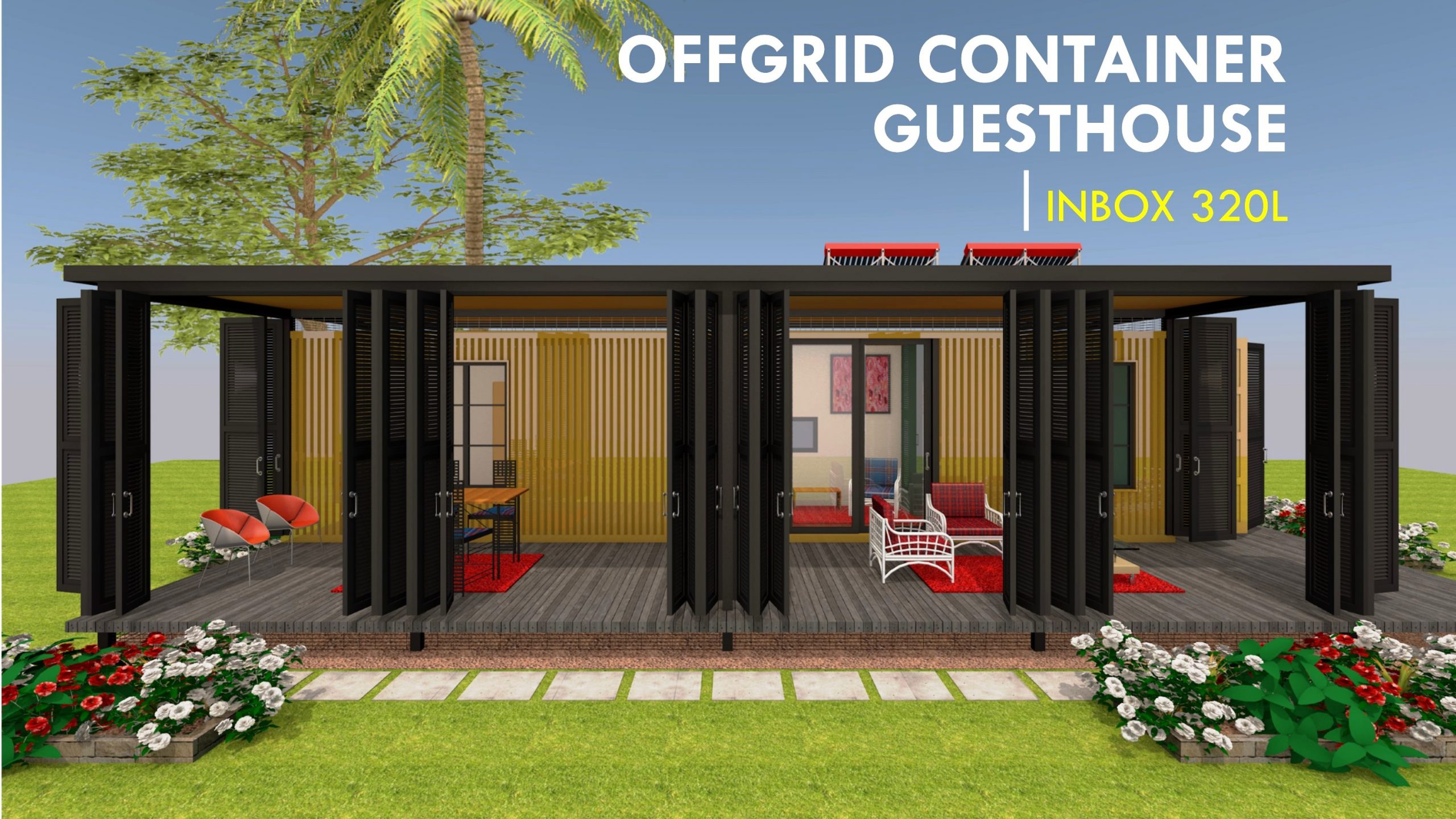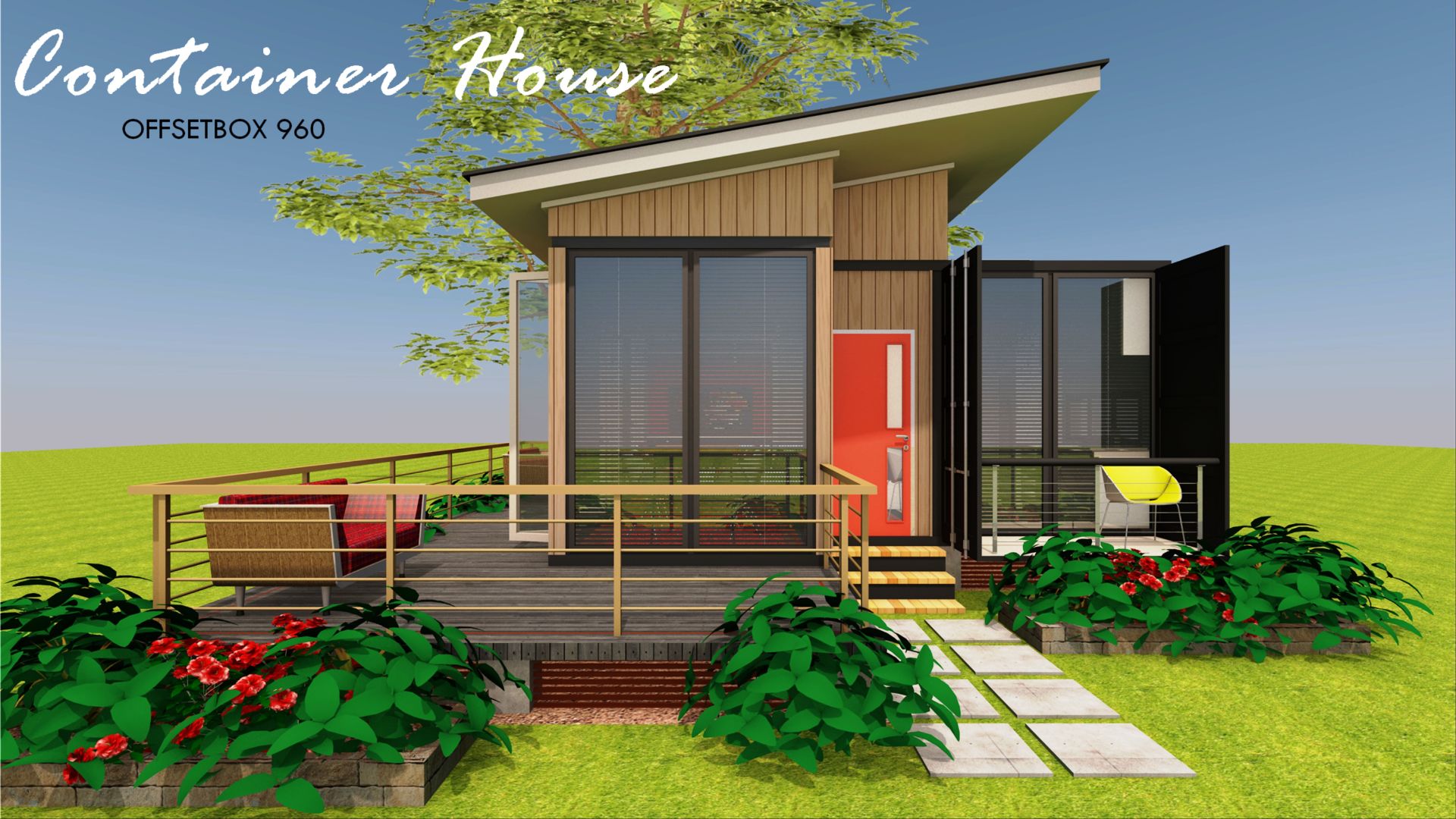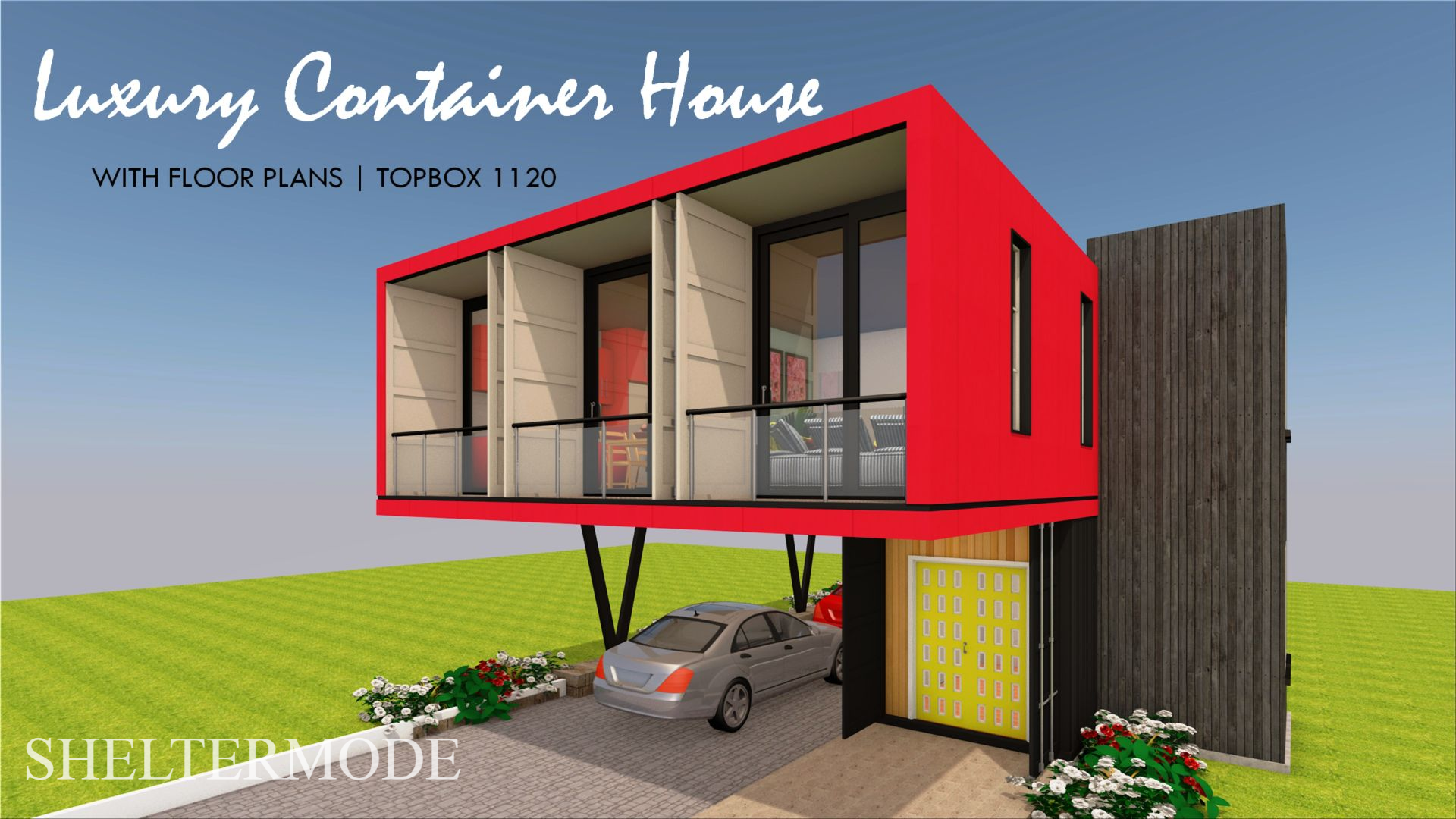GUESTBOX 320 is an Amazing Off-grid Shipping Container Guesthouse Design with a plinth area of 320+ square feet shipping container indoor space plus outdoor living. In this single 40 foot shipping container Holiday cabin, we have ingeniously accommodated the following salient features: 2 Bedrooms with wardrobes on either end of the container, One bathroom, Open plan Indoor living, Kitchenette, Outdoor living. The design retains its original container access doors which are fitted with painted louvered doors for an outdoor bathroom.

This 40 foot container cabin sits on a steel pier foundation to elevate it off the ground. This light foundation permits continuous air-flow to keep the container cool, keeps the container from moisture and also enable plumbing with ease. The underside space is fitted with rustproof mesh wire to prevent birds and animals from perching inside. For more information, you are encouraged to go through our previous presentation on The Top 5 Foundation Types used in Shipping Container Homes and Buildings to understand more on foundation design.

The elevated foundation provides a good position to construct a 2.7 meter wide deck. A deck is a quick and easy way to add extra living space to a container home by greatly extending outdoors the compact living space inside a shipping container. The Cabin’s main entrance opens onto a large elevated deck off the front edge, greatly extending the compact living space inside the container.





This project was designed with a message of environmental sustainability at the forefront, and it is adorned with several eco-friendly elements such as: Firstly; the reuse of a “one-way” container for a new and permanent use was the optimal recycling. Reusing a single 40 foot container upcycles about 3500kg of steel; and saves about 8000 kWh of energy that would otherwise be needed to melt it down.
Secondly; If you are towing with an idea of constructing this cabin, if you live in a region that receive more than 6 hrs consider installing photo-voltaic panels on the roof to generate electricity from solar energy to run the cabin. Consider installing a solar water heating system too.
The deck and the container are covered with corrugated steel roofing elevated above the container to guard it from rain and direct sunlight. The under roof space is fitted with rustproof mesh wire to prevent birds and animals from perching inside. The roof also acts as rainwater catchment to collect rainwater for non-drinking use.
To cover off the large and bare walls on the container, a mesh wire is welded onto the exterior to accommodate vines and climbers to introduce some greenery and further insulate the exposed container walls from direct solar radiation.

The interior of the cabin is lined with an appropriate insulation material depending on the climate. Without insulation, the cabin would be like an oven in summer and freezing in winter. Insulation is also essential to preventing condensation, which can corrode the container and cause mould. Watch our previous presentation on 8 ways on How to insulate a shipping container house, for more understanding. Ensure all the electrical and plumbing works are fit out before lining the interior. For ecofriendly finishes consider using bamboo plywood. Bamboo is renewable; durable; and is good material for both the floor as it is for the walls.

Fourthly; all the water from the shower and sink can be captured in a gray-water tank and used to irrigate the garden. Maximizing use of space in the shipping container should be of utmost importance, the 300 square feet bathroom can be fitted with a solar powered composting toilet. The shower cubicle should be enclosed for privacy and also to keep the toilet dry at all times. The bathroom should be finished with a non-slip floor finish and a waterproof finish for the walls. A shower curtain runs on a hospital track, offering the requisite privacy.

Seven; the container “floats” on a foundation of piers and crossbeams made from recycled telephone poles. Consider using Composite decking as an alternative material to conventional timber. Composite decking is warm to the feet and also resistant to the toughest weather conditions which makes it a great, low maintenance alternative for an off grid cabin. For economic sustainability, consider having the cabin listed on vacation rental platforms to earn some extra income and self-sustenance.

What do you like about our new container cabin design? Do you have any question? Feel free to ask by posting in the comments below. For additional design details, and interior views; View a complete house tour HERE. If you have any question, feel free to ask by posting in the comments below.For more details on the house design, visit our website sheltermode.com. If you like this design you can buy blue prints of this design here.The blueprints come as a full set of drawings comprising of Plans, Elevations and Section Details. If you need further inspiration; check out our OTHER CONTAINER HOMESdesigns
You can watch the VIDEO of the House Below.
[CONNECT WITH US ONLINE]
WEBSITE: http://sheltermode.com
TWITTER: http://twitter.com/sheltermode
FACEBOOK: http://facebook.com/sheltermode
INSTAGRAM: http://instagram.com/sheltermode
PINTEREST: http://pintrest.com/sheltermodehomes




